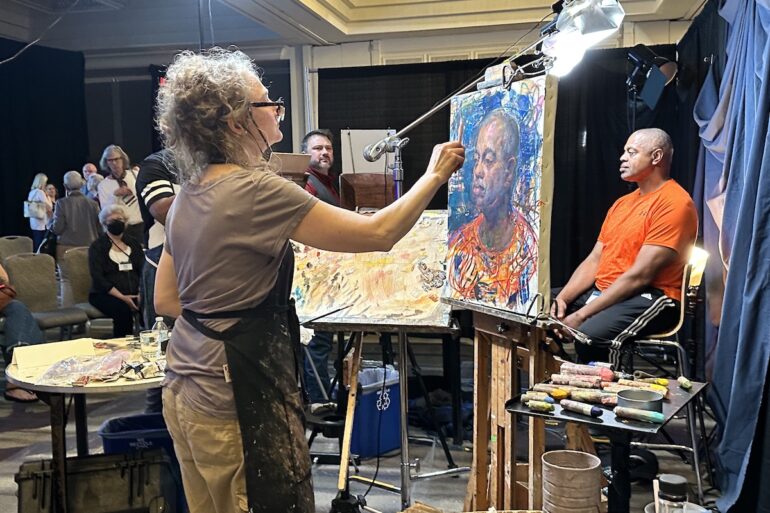
This post is also available in:

The Art of The Portrait, the annual -IMPERDIBLE- event organized by the Portrait Society of America opens its doors to the many, extraordinary artists who have gathered this year at the Hyatt Regency Reston, in the town of the same name, located just a few miles from the capital of the United States of America, Washington, D.C.
The convention, besides being an excellent educational tool in which to see artists at work, also represents a time of conviviality and sharing. Attendees include both familiar faces -among them some boast attendance at all past conventions- and new artists who are able to breathe deeply the sense of familiarity and sharing that the institution has been able to create around them: values that are unmissable nowadays but that do not seem to want to erode the art environment. Thankfully.
Welcoming the attendees, who arrived almost in their entirety on Wednesday evening to greet each other before the official start of the convention, was the beaming smile of Christine Egnosky -Executive Director of the Portrait Society of America- accompanied, as always, by Michael Shane Neal -Chairman of the Portrait Society of America- and the entire team that so thoughtfully organizes the event each year, assisted by the help of the many member artists who enthusiastically dress the role of volunteers, as one does in a large family.
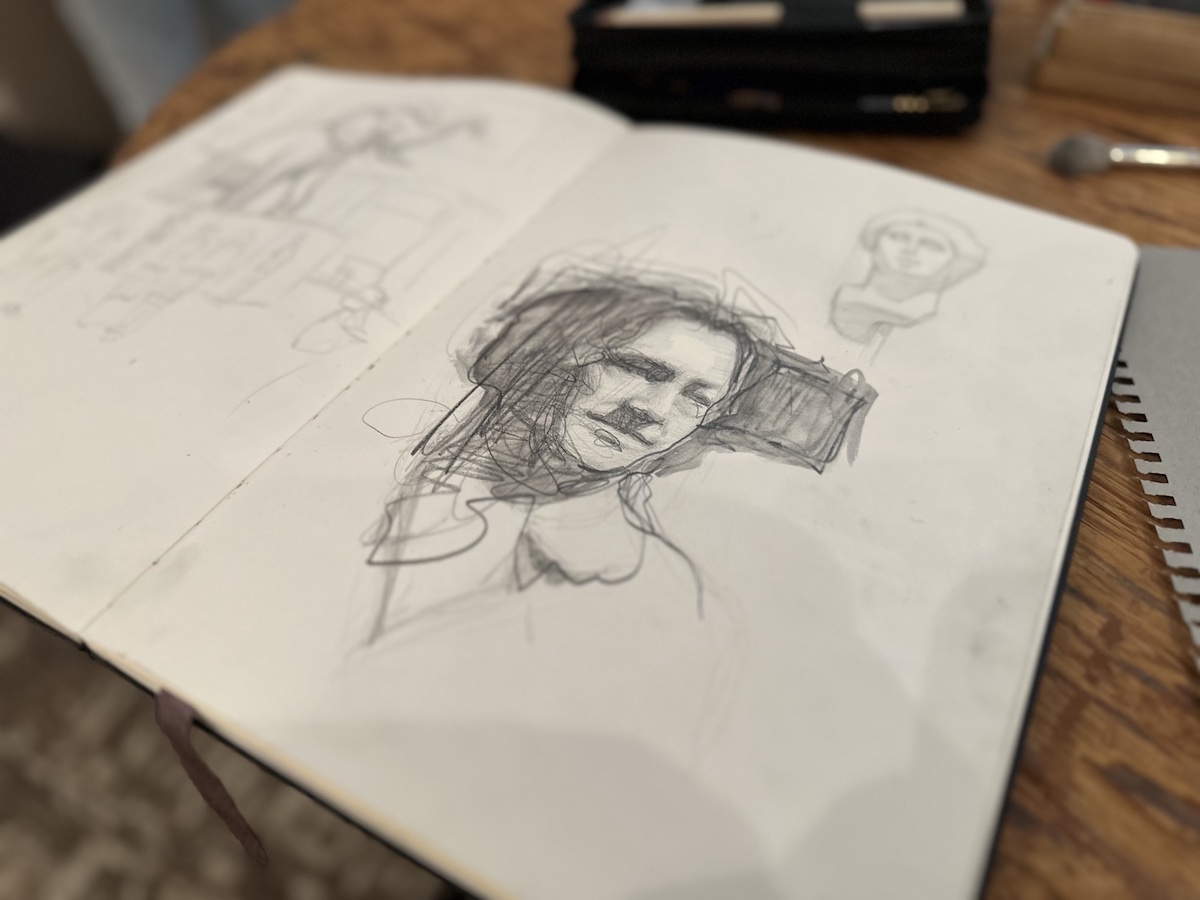
Protagonists of this year’s pre-convention demonstration sessions were : Scott Burdick, Susan Lyon and Mary Whyte.
The pre-convention demonstrations are structured in such a way that the morning demonstration session carried out by faculty members is followed by a hands-on session in which participants are invited to pose models -sub-portrait or full-length, depending on preference- under the icy gaze of the faculty member on duty who dispenses guidance, advice and feedback. The feedback, in particular, as well as the critical sessions that will take place in the following days in dedicated spaces, are an effective tool that allows for significant improvement in technique, while also delving a bit into the faculty members’ artistic logic.
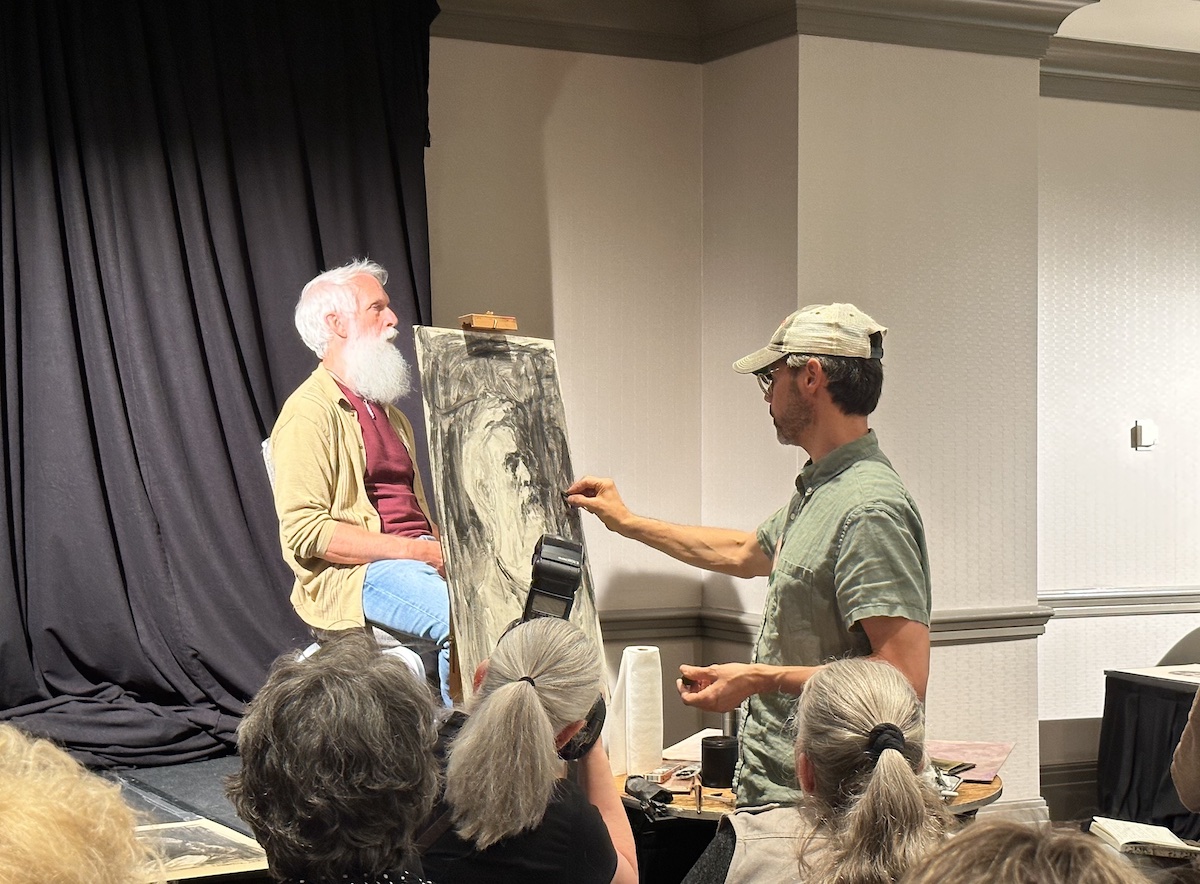
Scott Burdick’s workshop covered a tough topic, especially for beginners: “The Big Shape Approach to Drawing.” Beginning with the use of powdered charcoal diluted in water, which the artist spreads with large brush strokes, Burdick darkened the background in order to more clearly read the tonal values of the facial planes. According to Burdick, the making of large shapes is the basis of proper composition, which requires both, a good drawing base and the correct study of tonal values. Based on these assumptions and drawing on a teaching of Bill Parks -his teacher and mentor during his studies at the American Academy of Art- in order to make a good composition, it is necessary to make an analysis of what “specifically” works and what doesn’t work in the composition. This is a blunt question that Burdick constantly asks himself, and it is the basis of his artistic style, which combines abstract and realistic elements in a continuous process of “destruction and resurrection,” in which the artist’s task is to experiment to the point where he can use all the tools at his disposal in a more consonant manner.
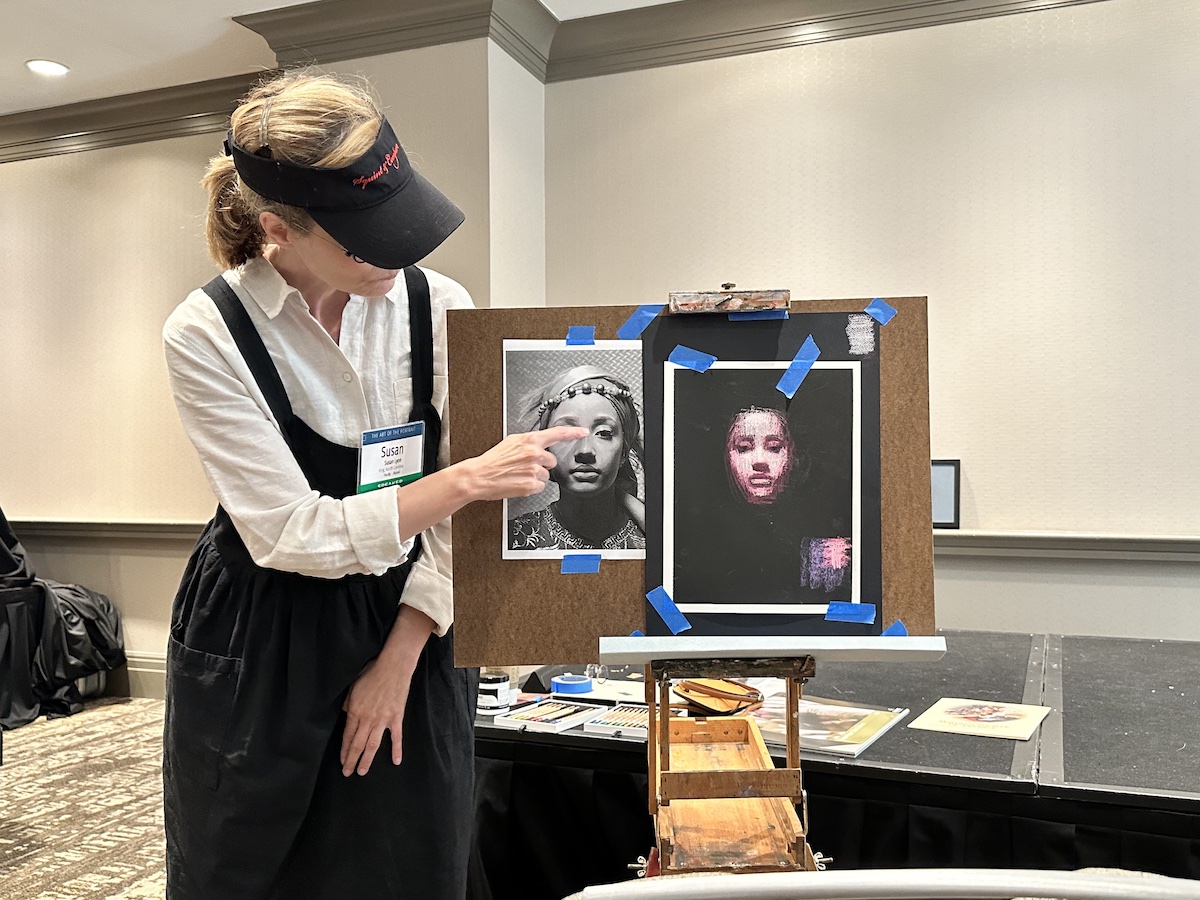
In the workshop, “Dynamic Color with Pastel” by Susan Lyon, the artist approached pastel portraiture from a photographic reference that she made, without slavishly following the image, on a sheet of dark tonal paper. This is a completely innovative and interesting approach because, as the artist stated, “It’s very exciting to see the shapes come through from the dark of the black paper.” A strong advocate of painting from life, Lyon does not disdain to experiment with photographic references, which she considers exclusively as suggestions and consequently does not slavishly copy. Before making the final composition, the artist habitually performs multiple compositional studies in order to find the solution that best satisfies her, a process that turns out to be much trickier than one might imagine. If for making drawings from life Lyon helps herself with the aid of the brush, which serves as a measuring tool for assessing compositional lines and angle, for painting from photographic reference -for which she prefers the sight-size format- she tends to control the distance between parts. For the correct composition of a portrait Lyon uses five pivotal points of the face, which take into account the shadow areas and with which she correctly maps the face. The five points are: the eye socket, the base of the nose, the upper lip, the under lip and the base of the chin. On the daily demonstration Lyon worked from the inside out, pointing out that: “everything in the shadows is a mystery” so highlighting edges and constraints, more or less soft, helps to create the connection between the parts.
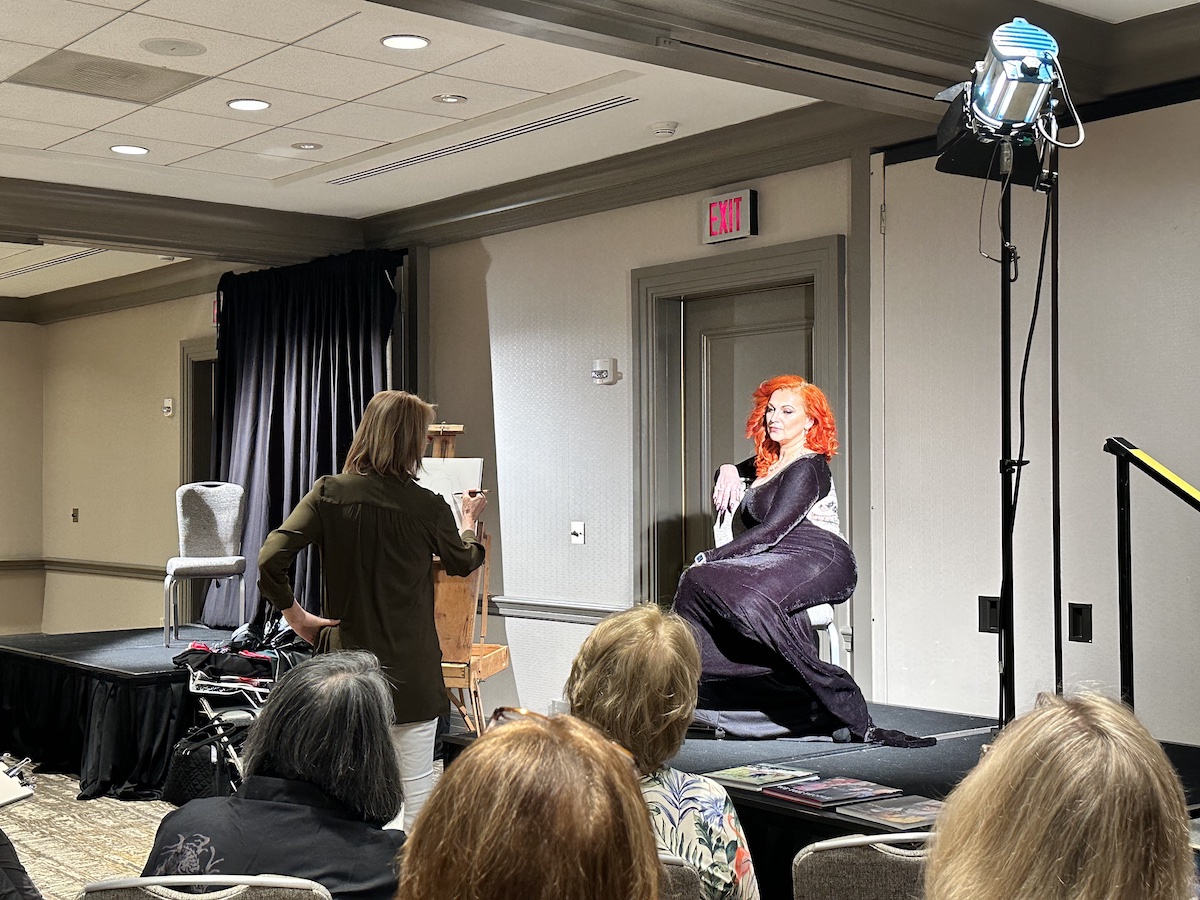
Whyte, author of the ambitious project, “We the People: Portrait of Veterans in America” -on display, these days (at) The Army Museum- has dealt with a cherished theme that characterizes each and every one of her paintings: “Drawing with Emotion.” Emotion is in fact the common denominator of each of her works, characterized by a poetry capable of emphasizing the peculiarities of the subjects depicted in their everyday life and, more often than not, in their loneliness. According to Whyte, who for the demonstration session made a portrait of the volcanic model Nathalie, in the compositional process it is necessary to think in terms of forms proceeding from large to small shapes until the details are defined. In order to make emotional compositions, capable of engaging the viewer, according to Mary Whyte it is necessary to make three key concepts clear: to identify the emotions felt in observing the subject to be represented, with its unique and unrepeatable way of being. This is a concept that must take shape even before you put your hand to the brush and palette. The second factor is the composition of the painting: defining the movement of the subject, the elements that characterize the subject, and the background helps the viewer to let himself get involved in the narrative of the represented subject and his past. Last but not least, according to Whyte it is necessary “to stay in the course”: enhancing one idea at a time, one feeling at the time, capable of emphasizing, with simplicity, all the pathos of the subject.
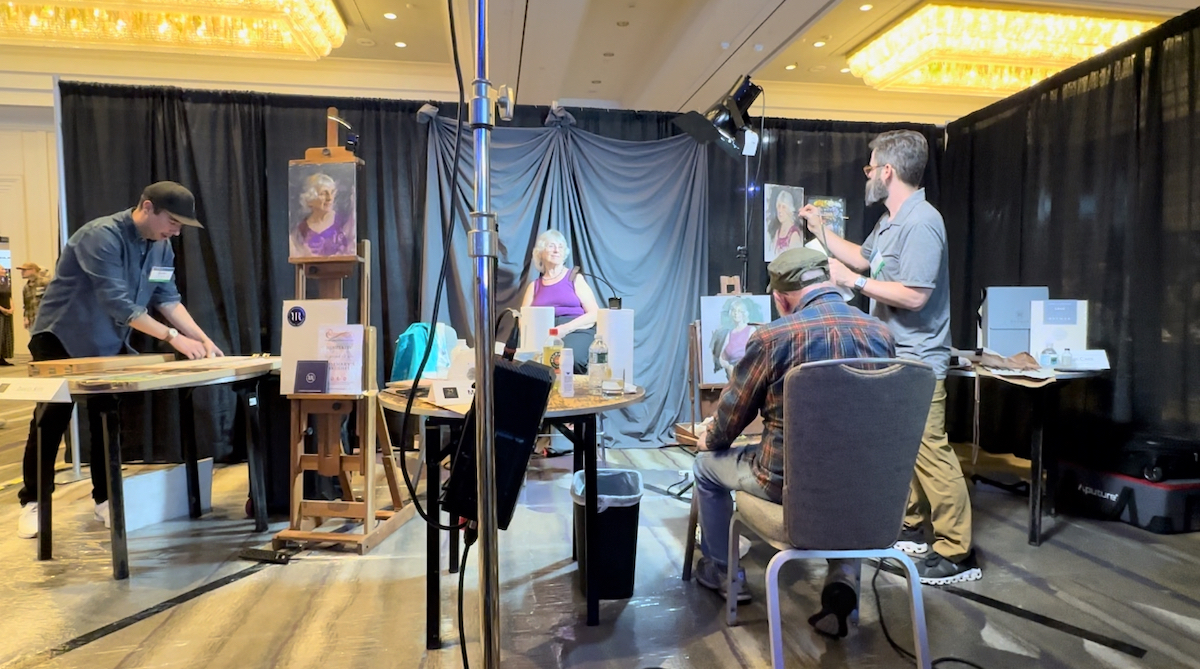
Late in the afternoon, the awarding of badges was followed by the extraordinary Face-Off: the catalytic event that brought together all participants and featured eighteen artists who, divided into groups of three, made life-like portraits of the posing models.
Among them were: the legendary Max Ginsburg, Louis Carr, Daniel Keys, Rose Frantzen, Ron Hicks, Thomas Caleb Goggan, Oliver Sin, Quang-Ho, Robert Liberace, Kevin Macpherson, Dominique Medici, Mary Qian, Anthony Ryder; Rick Casali, Dominique Medici, Jeff Hein, Jennifer Gennari, and Suchitra Bhosle.
The Face-Off is always an event with a “WOW” factor: during the three-hour session, the artists, in a race against time, create portraits that will be displayed following the silent auction. Proceeds from the auction will be used by the Portrait Society of America, to support the scholarship program and various ongoing projects of the institution, which is always in the forefront of popularizing art according to tradition.
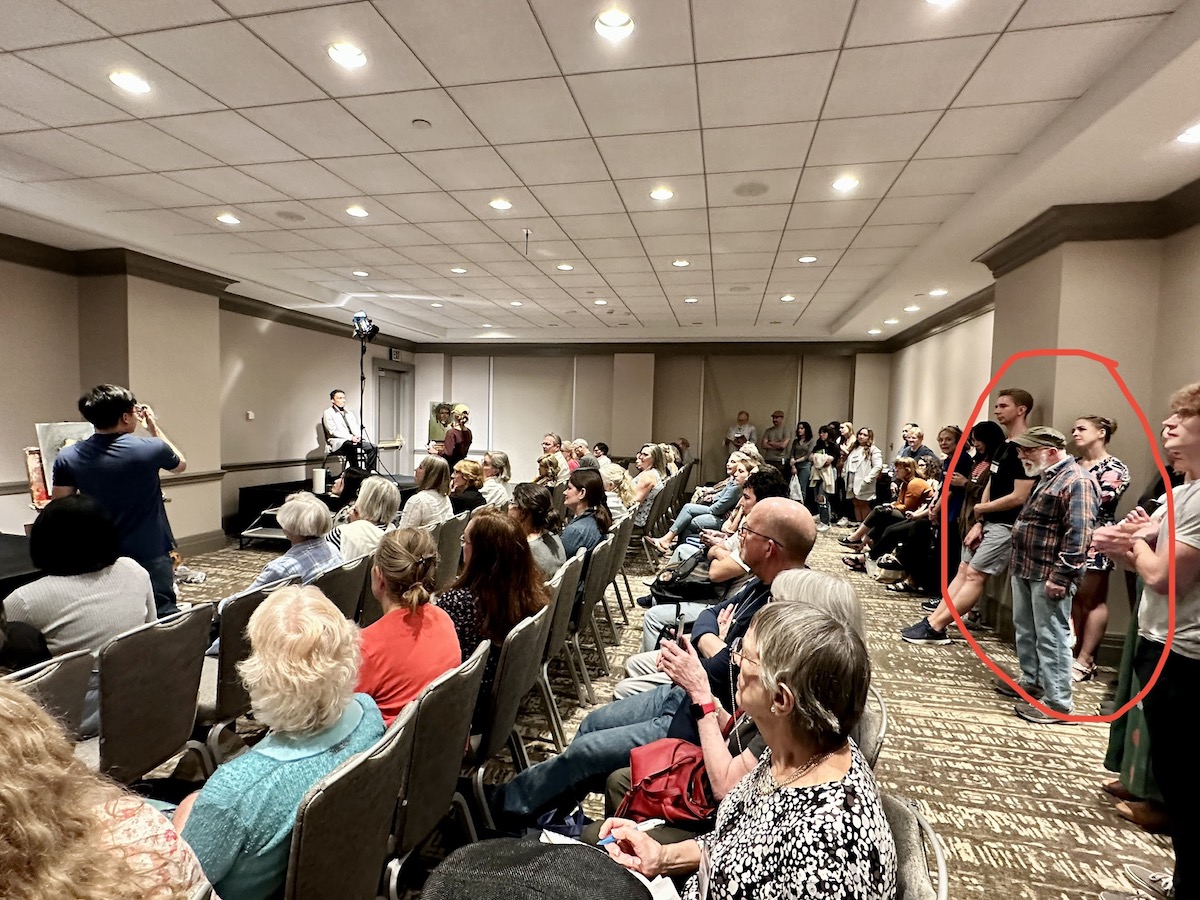
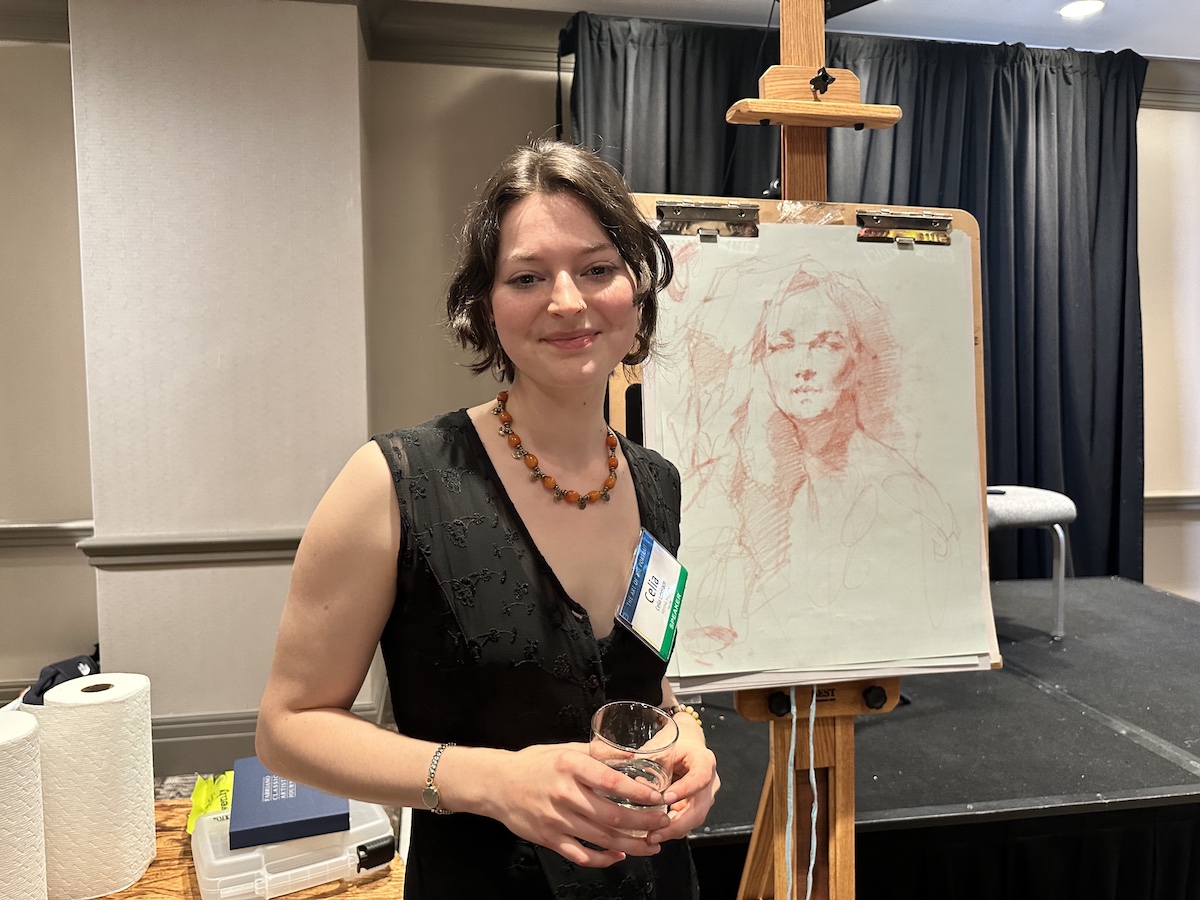
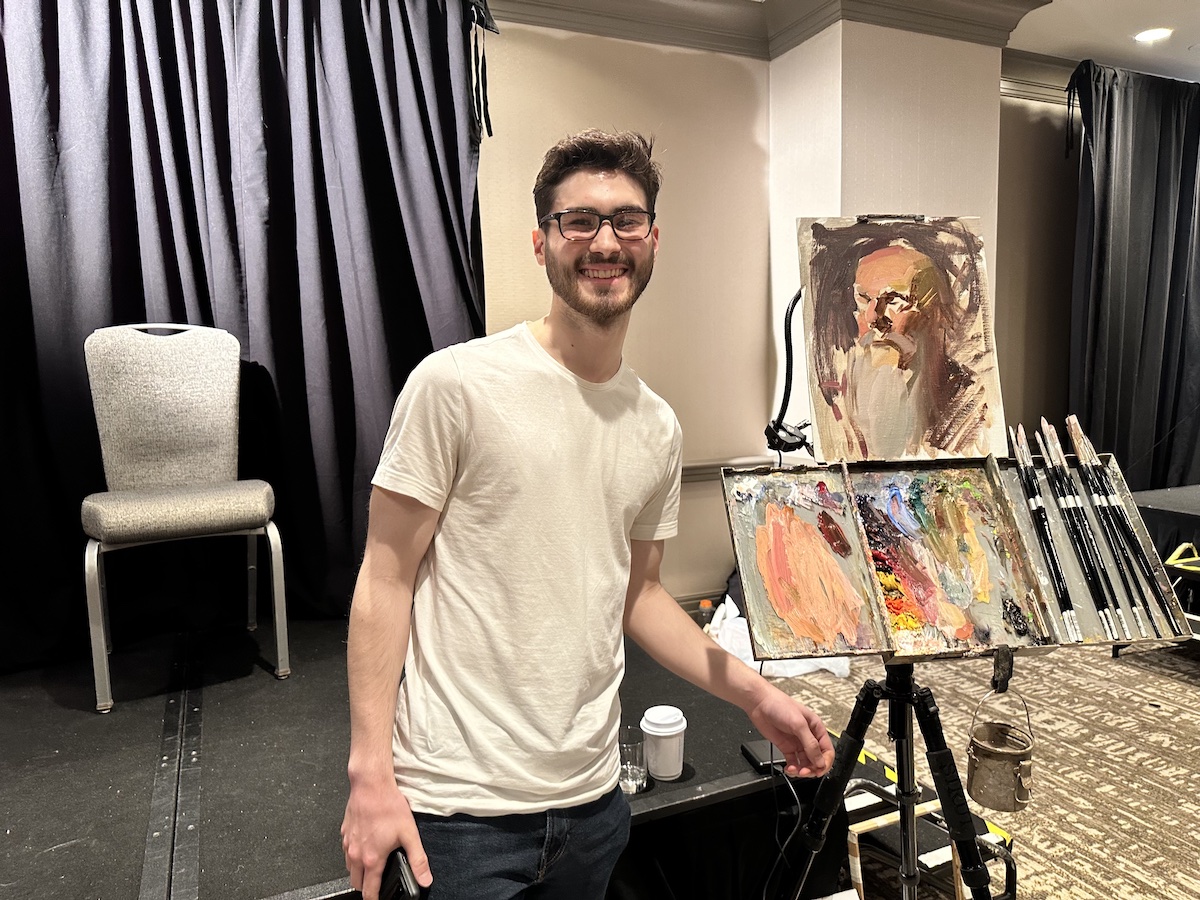
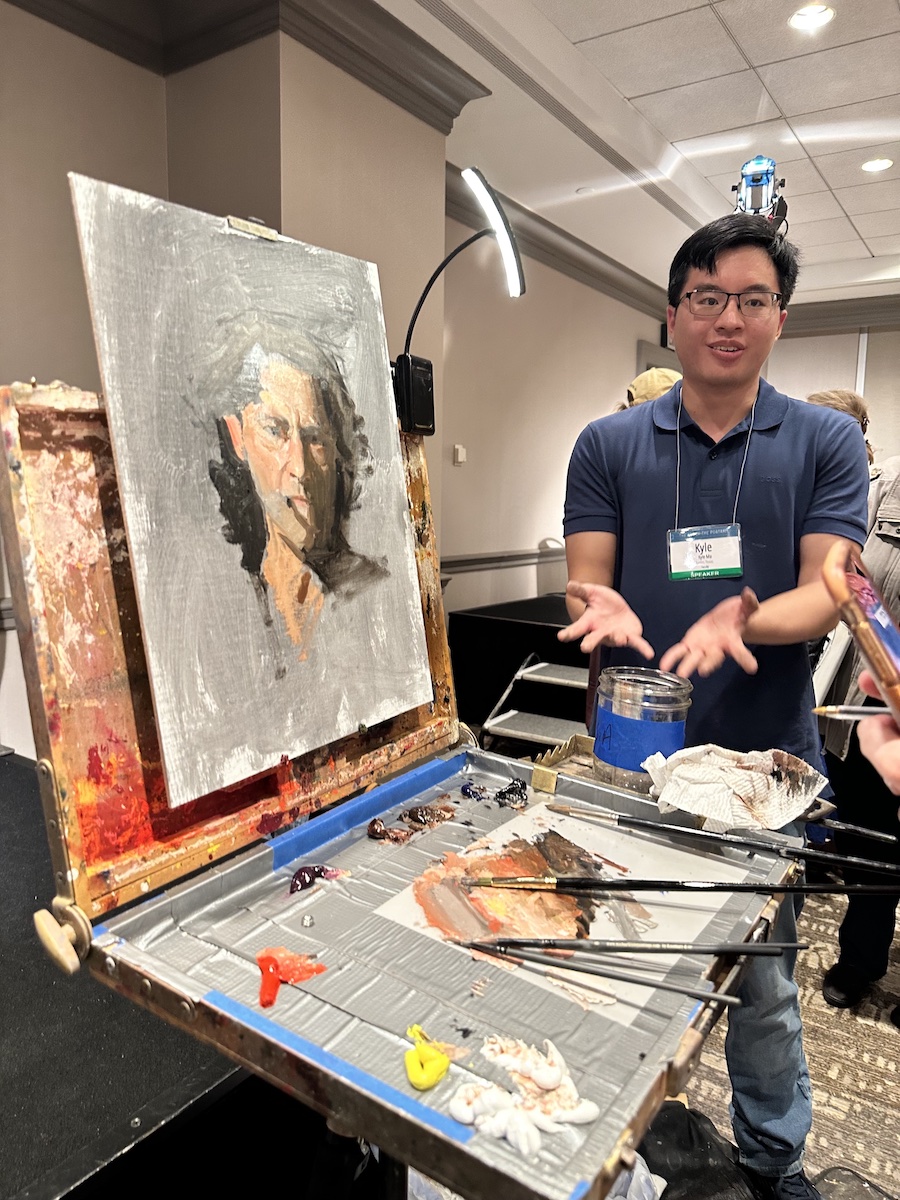
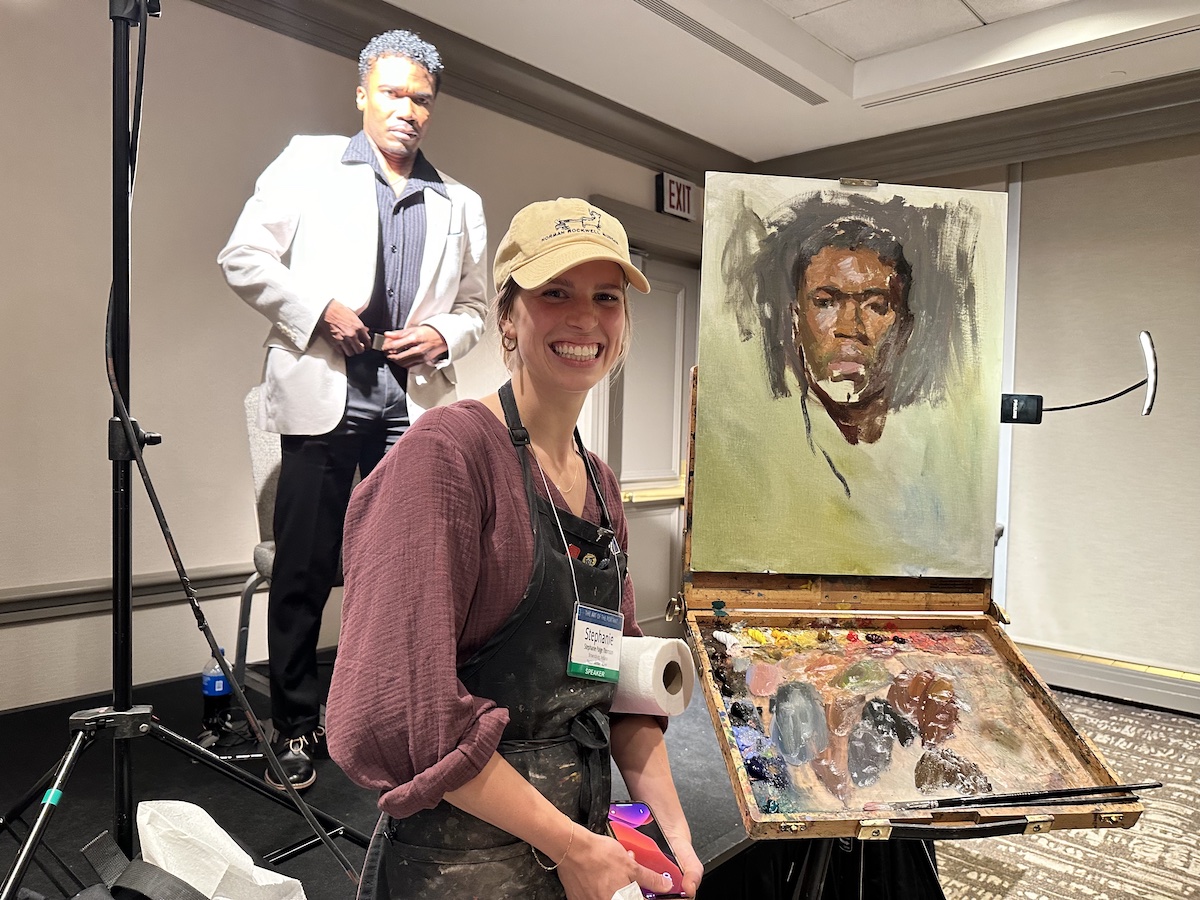
The day ended with the open painting demonstration entitled, “The Next Generation.” In the two and a half hours available four young emerging talents -Celia Liberace and Jared Brady, Kyle Ma and Stephanie Thomson- shared with the audience their approach to the art of portraiture. The initial moment of silence was followed by a flow of information regarding not only their art making but also their artistic background, which began at an early age. It was priceless to see the legendary master Max Ginsburg, “the people’s painter,” observing in curiosity and amusement these four promising artists to proposed of whom he declared, “They are the Future!”
A few words with great meaning.
After all, seeing them at work, with their enthusiasm and tenacity, one wonders: how can one blame him?
Miami Niche looks forward to seeing you tomorrow for the official opening of the Portrait Society of America’s The Art of The Portrait, which this year celebrates its 25th anniversary since its founding.
Stay tuned and follow us.
(on the title: The magnificent Rose Frantzen during the Face-Off. She is ten artists in one)
